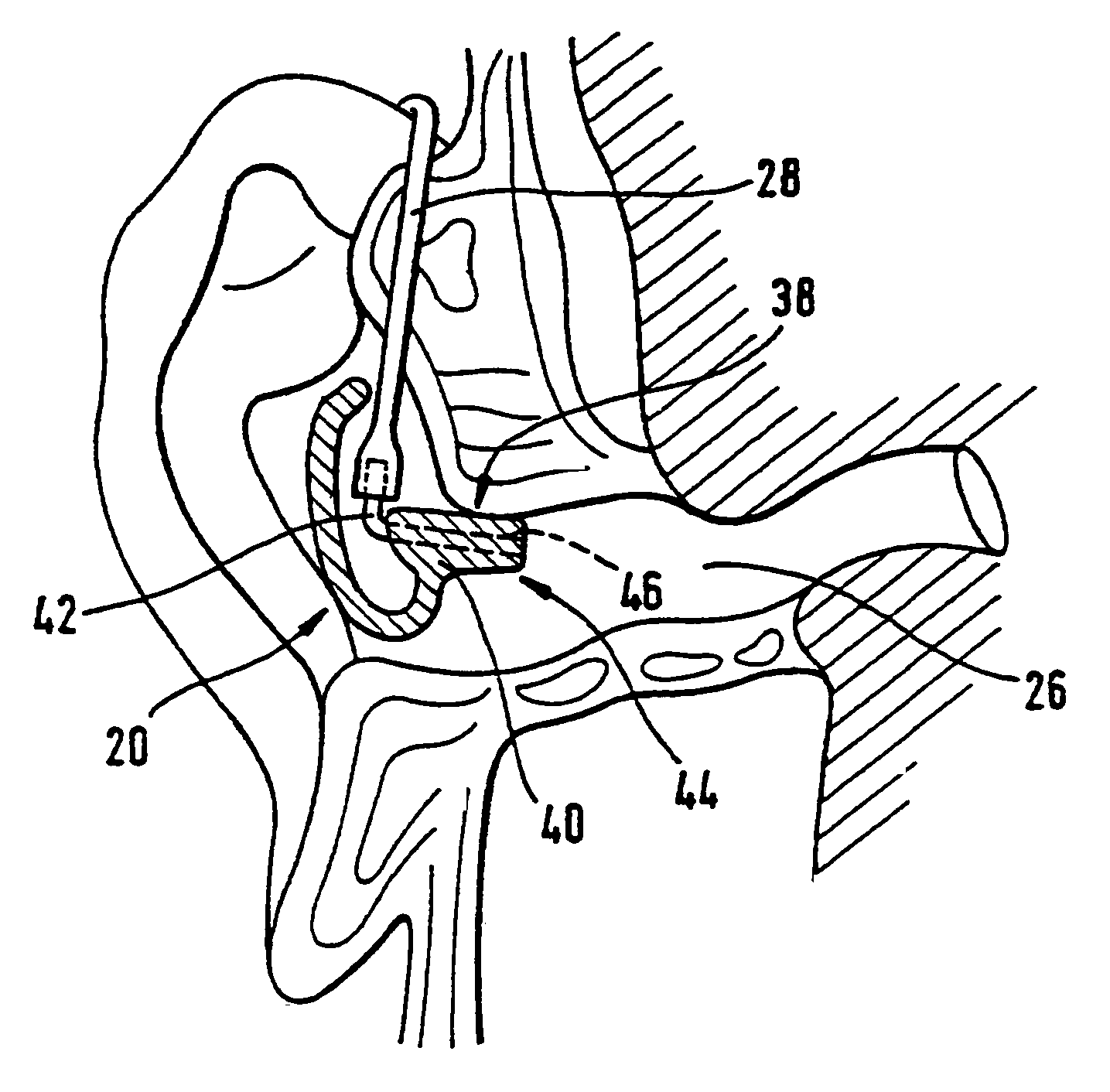Otoplasty for behind-the-ear (BTE) hearing aids
a hearing aid and otoplasty technology, applied in the field of ear fittings, can solve the problems of not being able to make hearing correction as natural, and achieve the effects of less room, improved hearing, and reduced contact area
- Summary
- Abstract
- Description
- Claims
- Application Information
AI Technical Summary
Benefits of technology
Problems solved by technology
Method used
Image
Examples
first embodiment
[0056]FIGS. 17 to 19 show this modification. The reference number 461 refers to a sound tube eye that stabilizes a sound tube 428. The arrangement is designed in such a way that the sound tube eye 461 is located directly above the incisura anterior 425, i.e. between the tragus 427 and the crus helicis 424.
[0057]For the remainder, the embodiment corresponds to that according to FIGS. 6 to 11, i.e. half of the earpiece body is located in the cymba, while the other half can run below the helix 431 via the crus inferior anthelicis 433 in the direction of the fossa triangularis 435. This is shown in FIG. 19, for example.
[0058]A second variant of the modified embodiment of the earpiece according to FIG. 16 is shown in FIGS. 20 and 21. Here again, for the sake of simplifying the description, the same reference numbers are used for segments and components that have an equivalent in FIGS. 17 to 19, but with a 5 preceding them.
[0059]Here, the arrangement is designed in such a way that a holde...
second embodiment
[0061]the modified version of the earpiece according to FIG. 16 is shown in FIGS. 22 and 23. Here again, to simplify the description, the same reference numbers are used for segments and components that have an equivalent in FIGS. 6 to 11, with a 6 preceding them here.
[0062]The difference as compared with the variant according to FIGS. 20 and 21 is that the sound tube holder is formed by an auditory canal tab 644 arranged without making contact in the upper region of the auditory canal, which holder surrounds the sound tube 628 or an angled piece of the earpiece.
[0063]Finally, FIGS. 24 and 25 show a modification of the variants of FIGS. 20 to 23, in such a way that further improvement of the stabilization of the earpiece is a result. The sound tube holder 744 is stabilized by way of a support claw 780, shown with hatched lines, which extends from the bottom of the sound tube holder 744 in the direction of the antitragus 730, molding itself against the concha 722.
PUM
 Login to View More
Login to View More Abstract
Description
Claims
Application Information
 Login to View More
Login to View More - R&D
- Intellectual Property
- Life Sciences
- Materials
- Tech Scout
- Unparalleled Data Quality
- Higher Quality Content
- 60% Fewer Hallucinations
Browse by: Latest US Patents, China's latest patents, Technical Efficacy Thesaurus, Application Domain, Technology Topic, Popular Technical Reports.
© 2025 PatSnap. All rights reserved.Legal|Privacy policy|Modern Slavery Act Transparency Statement|Sitemap|About US| Contact US: help@patsnap.com



